Getting back into drawing after a long hiatus can be a daunting task. As someone who used to love drawing but stopped for a while, I know how hard it can be to pick up a pencil and start again. However, I also know how rewarding it can be to rediscover the joy of creating art.
In this article, I will share some tips and tricks that have helped me get back into drawing and hopefully will help you too.
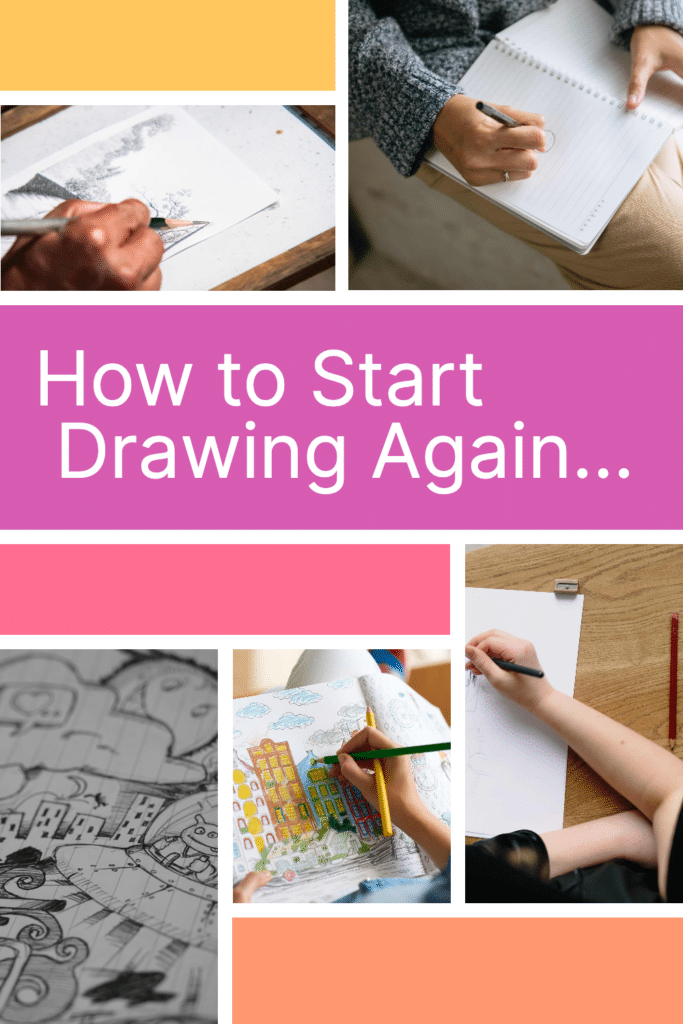
**This page may contain affiliate links to products I have used or recommend. If you purchase something from this page, I may receive a small percentage of the sale at no extra cost to you.**
How to Start Drawing Again: First Steps
The first step to getting back into drawing is setting aside time. Life can get busy, and it can be easy to put off drawing for another day. However, if you want to start drawing again, you need to make it a priority.
Set aside a specific time each day or week to draw, and stick to it. It doesn’t have to be a lot of time – even just 15 minutes a day can make a big difference.
Another helpful tip is to start small. Don’t try to create a masterpiece right away. Instead, start with simple sketches or doodles. Practice drawing basic shapes and lines, and gradually work your way up to more complex drawings.
Remember, the goal is to enjoy the process of drawing, not to create a perfect piece of art. With time and practice, your skills will improve, and you’ll be able to create more intricate and detailed drawings.
Assessing Your Current Skill Level
Self-Evaluation
Before starting to draw again, it’s important to assess your current skill level. This will help you set realistic goals and expectations for yourself, and also give you an idea of where to start.
To evaluate your skills, take a look at your previous work and ask yourself the following questions:
- What is my current skill level? Be honest with yourself and try to identify your strengths and weaknesses. This will help you focus on areas that need improvement.
- How long has it been since I last drew? If it’s been a while, don’t worry. Just remember that it’s normal to feel a bit rusty at first.
- What are my goals? Do you want to improve your skills, or just draw for fun? Knowing your goals will help you stay motivated and focused.
- What are my doubts? Are you worried about not being good enough? Remember that everyone starts somewhere, and improvement takes time and practice.
- How do I learn best? Do you prefer learning from books, videos, or in-person classes? Knowing your learning style will help you find the right resources to improve your skills.
Once you’ve answered these questions, you can start setting goals and creating a plan for improvement. Remember to start small and be patient with yourself. Improvement takes time and practice, but with dedication and effort, you can achieve your goals.
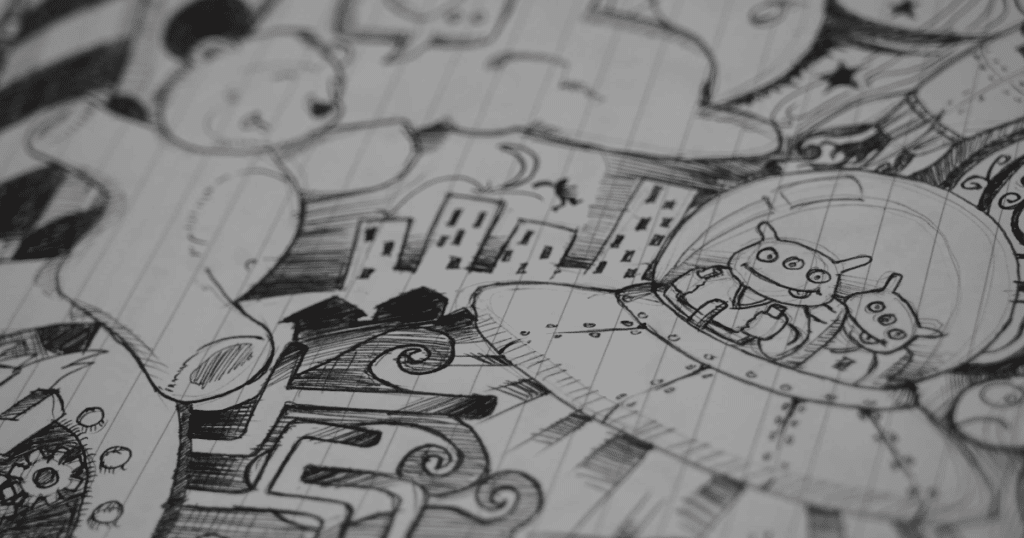
Finding Inspiration
As someone who has struggled to start drawing again, I understand the importance of finding inspiration. Here are a few things that have helped me get started:
Subject Matter
When it comes to inspiration, subject matter is key. I find that looking at the work of other artists is a great way to get ideas. I like to browse through art books or go to galleries and museums. The internet is also a great resource, with websites like Pinterest and Instagram providing endless inspiration.
When looking for subject matter, I like to keep an open mind. I try not to limit myself to one type of subject, but instead explore different themes. Landscape, still life, people, animals, and abstract are all great options to consider.
Media
Once I have an idea of what I want to draw, I think about the medium I want to use. Different mediums can evoke different moods and emotions, so it’s important to choose one that fits the subject matter.
Color is also an important factor to consider. Some subjects may call for bold, bright colors, while others may work better with muted tones. I like to experiment with different color palettes to see what works best.
When it comes to brushes, I find that having a variety of sizes and shapes is helpful. This allows me to create different textures and effects.
In summary, finding inspiration is crucial when starting to draw again. By exploring different subject matter and mediums, you can find what works best for you. Don’t be afraid to experiment and try new things.
Developing Good Habits
Setting Goals
When I first decided to start drawing again, I realized that I needed to set some goals for myself. These goals helped me to stay focused and motivated, and they also gave me a sense of direction.
To set your own goals, think about what you want to achieve with your drawing. Do you want to improve your skills? Do you want to create a specific type of art?
Once you have a clear idea of what you want to accomplish, break down your goals into smaller, more manageable steps. For example, if you want to improve your skills, you might set a goal to practice drawing for 30 minutes every day.
Establishing a Routine
Developing good habits is essential if you want to make progress with your drawing. One of the most important habits to establish is a regular drawing routine.
When I first started drawing again, I found it helpful to set aside a specific time each day for drawing. This helped me to make drawing a part of my daily routine, and it also helped me to stay consistent with my practice.
Another habit that can be helpful is to pace yourself. Don’t try to rush your progress or compare yourself to others. Instead, focus on your own journey and take things one step at a time. Remember that progress takes time, and that it’s okay to make mistakes along the way.
In summary, setting goals and establishing a routine are two key habits that can help you start drawing again. By breaking down your goals into smaller steps and making drawing a regular part of your routine, you can develop the skills and patience needed to create beautiful art.
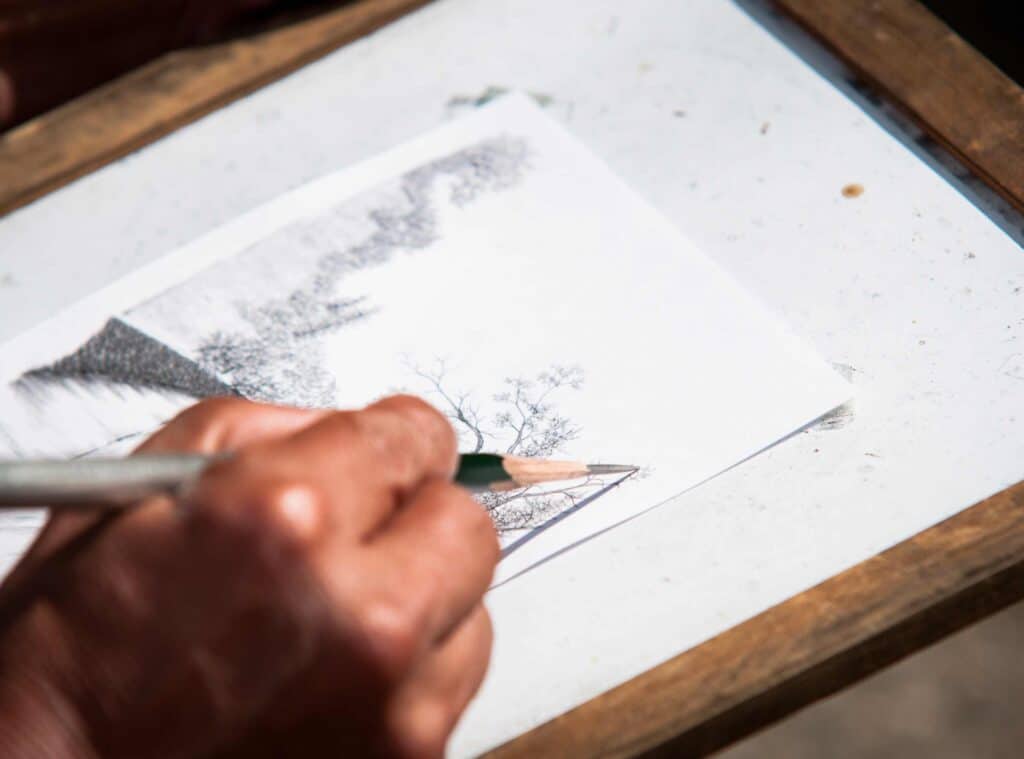
Learning and Improving
Taking Classes
I’ve found that taking classes is a great way to learn and improve my drawing skills. Classes can provide structure and guidance that can be hard to find when learning on your own. Look for classes at local art schools or community centers, or consider taking an online course.
When choosing a class, consider your skill level and what you want to learn. Some classes focus on specific techniques or mediums, while others may be more general. Figure drawing classes can be especially helpful for improving your ability to draw the human form.
Learning on Your Own
If you prefer to learn on your own, there are many resources available to help you improve your drawing skills. Books and tutorials can provide step-by-step guidance on specific techniques or styles. Look for books that focus on the fundamentals of drawing, such as proportion, perspective, and shading.
Practice regularly, and don’t be afraid to experiment with different techniques and styles. Set goals for yourself, such as drawing for a certain amount of time each day or completing a certain number of drawings each week.
Consider finding a drawing buddy or joining an online community to share your work and get feedback.
Remember that learning to draw takes time and practice. Don’t get discouraged if your drawings don’t turn out the way you want them to at first. Keep practicing, and you’ll see improvement over time.
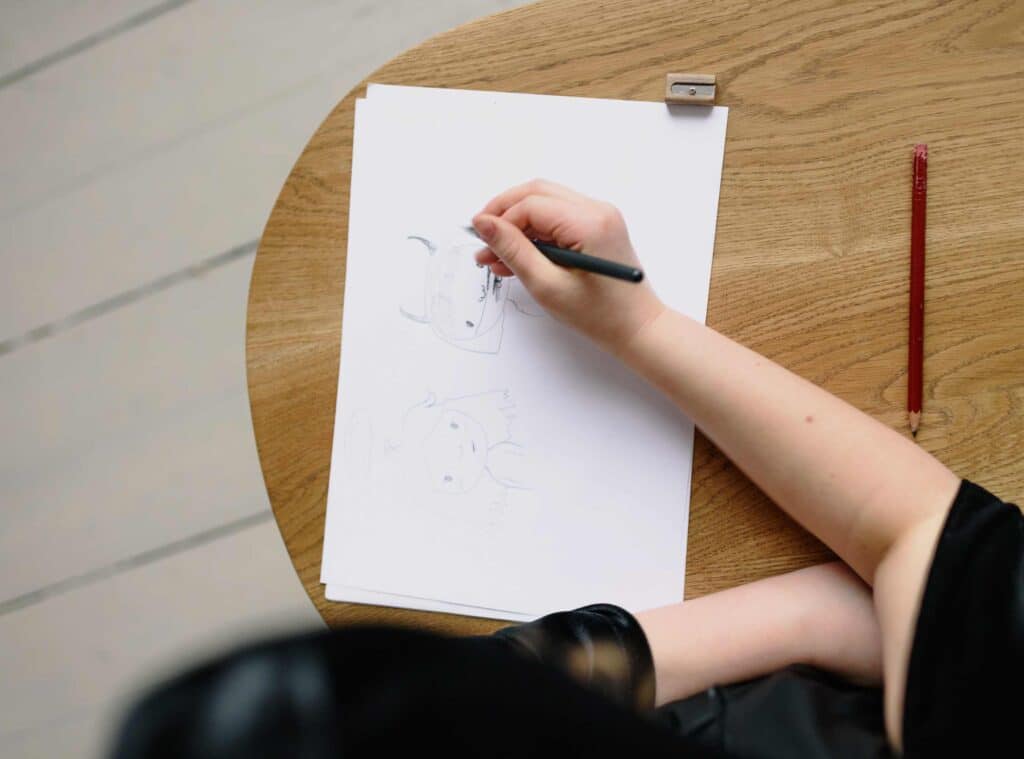
Overcoming Obstacles
Dealing with Frustration
When I first started drawing again, I quickly became frustrated with my lack of progress. It’s important to remember that drawing is a skill that takes time to develop.
Don’t get discouraged if your drawings don’t turn out the way you want them to at first. Instead, focus on the progress you are making and the enjoyment you get from the process.
Another way to deal with frustration is to break down the drawing process into smaller steps. Instead of trying to draw a complete picture all at once, focus on one element at a time, like the shape of an object or the shading of a particular area.
Making Time for Drawing
One of the biggest obstacles to starting or continuing to draw is finding the time. It’s easy to get caught up in the busyness of life and forget to make time for the things we enjoy. However, drawing can be a great way to relax and unwind, so it’s important to make it a priority.
One way to make time for drawing is to schedule it into your day. Set aside a specific time each day or week to work on your drawings. You can also try incorporating drawing into other activities, like listening to music or watching TV.
Dealing with Creative Block
Creative block can be a frustrating obstacle to overcome. When I’m feeling stuck, I like to try new techniques or materials to get my creative juices flowing. You can also try taking a break from drawing and engaging in other creative activities, like writing or photography.
Another way to overcome creative block is to draw inspiration from nature or your surroundings. Take a walk outside and observe the colors, shapes, and textures around you. Sometimes, just changing your perspective can help spark new ideas.
Remember, making mistakes is a natural part of the drawing process. Don’t be too hard on yourself if your drawings don’t turn out the way you want them to. With patience and practice, you can develop your artistic talent and creative side.
Sharing Your Work
As I started drawing again, I found that sharing my work with others helped me stay motivated and get feedback on my progress. Here are a few ways you can share your work:
Social Media
Social media is a great way to share your art with a wider audience. I started by posting my drawings on Instagram and Twitter, using hashtags to reach other artists and art enthusiasts. It was a great way to get feedback and connect with other artists who were also trying to improve their skills.
If you’re not comfortable sharing your work publicly, you can also create a private account or share your work with a smaller group of friends and family.
Joining an Art Community
Joining an art community can be a great way to get feedback and support from other artists. I joined a local art group and started attending their meetings and events. It was a great way to meet other artists and learn from their experiences.
If you don’t have a local art group, you can also join an online art community. Reddit has a number of art-related subreddits where you can share your work and get feedback from other artists.
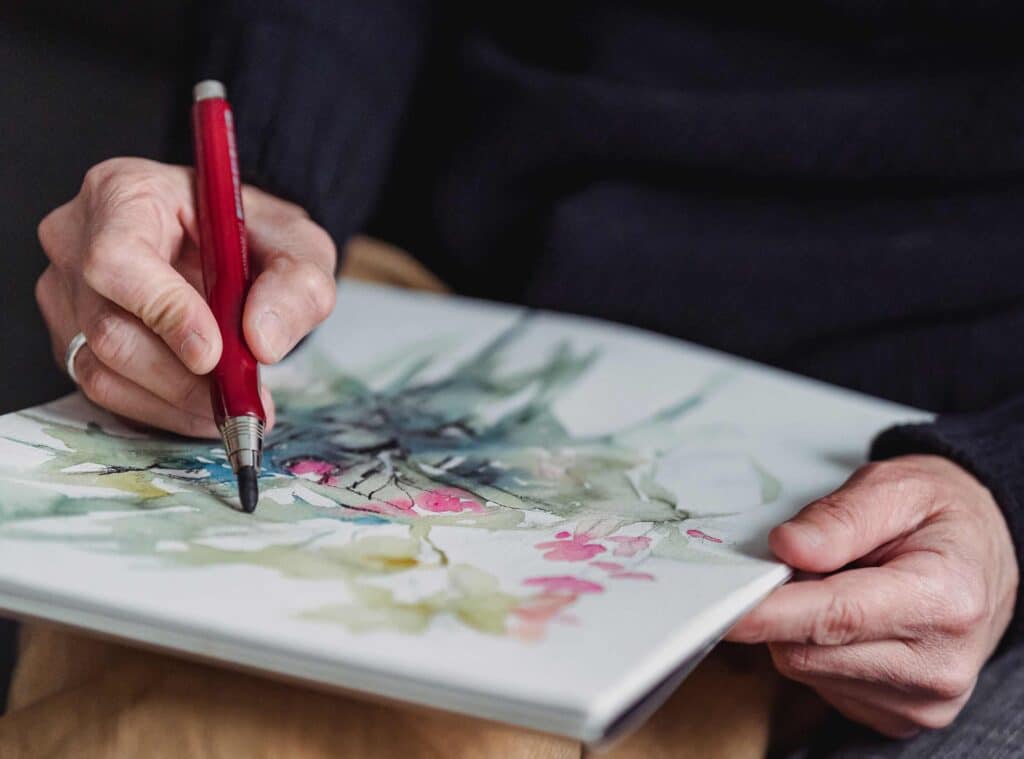
Other Ways to Share Your Work
There are many other ways to share your work, depending on your artistic abilities and interests. Here are a few ideas:
- Create a portfolio of your work and share it with friends, family, and potential clients.
- Enter your work into art exhibitions or contests.
- Create prints or merchandise featuring your artwork and sell them online or at local markets.
- Offer to create custom artwork for friends and family.
Remember, the goal of sharing your work is to get feedback and support from others, not to make exaggerated or false claims about your artistic abilities or creativity. Keep an open mind and be willing to learn from others, and you’ll be on your way to improving your skills and creating beautiful landscapes and other works of art.
Art Prompts to Help You Start Drawing Again
If you need inspiration for drawing ideas, check out the art prompts below to get you started!
- Time travel
- Celestial bodies
- Ocean depths
- Dystopian future
- Urban jungle
- Whimsical garden
- Childhood nostalgia
- Mythical creatures
- Unlikely friendship
- Abstract emotions
Art Supplies To Get Your Drawing Again
Sketchbooks or drawing paper: To regain your art skills after experiencing art block, choose a variety of sizes and paper types.
Graphite pencils: Most artists use a range of hardness levels (HB, 2B, 4B, 6B) to revive their drawing ability after a long break.
Charcoal sticks and pencils: Essential for any art student who has stopped drawing and wants to dive back into sketching.
Colored pencils: A quality set to help you overcome your art block and bring life and vibrancy to your drawings.
Ink pens and fine liners: Perfect for those who have taken a break from drawing in the past few months and want to add crisp lines to their art.
Erasers: Both kneaded and vinyl erasers for correcting and refining your art skills.
Blending stumps and tortillons: Useful tools for smooth transitions and shading as you rekindle your drawing ability.
Art supplies storage: A pencil case or organizer to keep your materials tidy and accessible.
Reference materials: Books or online resources featuring great artists and their techniques to inspire and guide you.
A comfortable workspace: A dedicated area to practice and experiment, encouraging you to keep up with your art skills even after a long break.
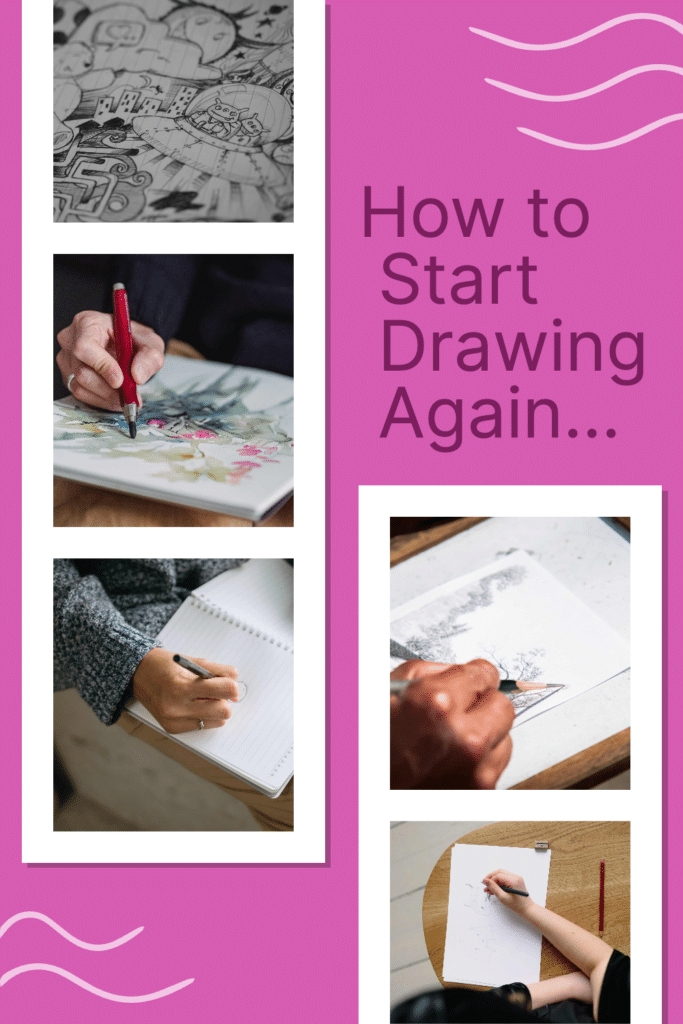
Conclusion
Drawing is a wonderful way to express yourself and to relax. If you have not drawn in a while, it can be intimidating to start again. However, with a little bit of effort and practice, you can get back into it and enjoy the process once again.
In this article, I have shared some tips and tricks for getting started with drawing again. Remember that you do not need to be perfect, and that practice makes progress. Here are a few final thoughts to keep in mind:
- Start small: Begin with simple sketches or doodles, and work your way up to more complex drawings as you gain confidence.
- Be patient: It takes time to improve your skills, so do not get discouraged if your drawings do not turn out the way you want them to at first.
- Have fun: Drawing should be enjoyable, so do not put too much pressure on yourself to create a masterpiece every time you pick up a pencil.
If you have been wondering how to start drawing again, I hope that these tips have been helpful, and that you are inspired to start. Remember that everyone has their own unique style, so embrace your individuality and let your creativity shine!
Other articles you may enjoy…
Master Your Craft: Choosing the Perfect Art Drawing Board for Your Creative Journey
The Ultimate Beginners Guide for Drawing on Black Paper with Colored Pencils
28 Anime Templates for Drawing: Get Your Anime Figures Up To Scratch!
